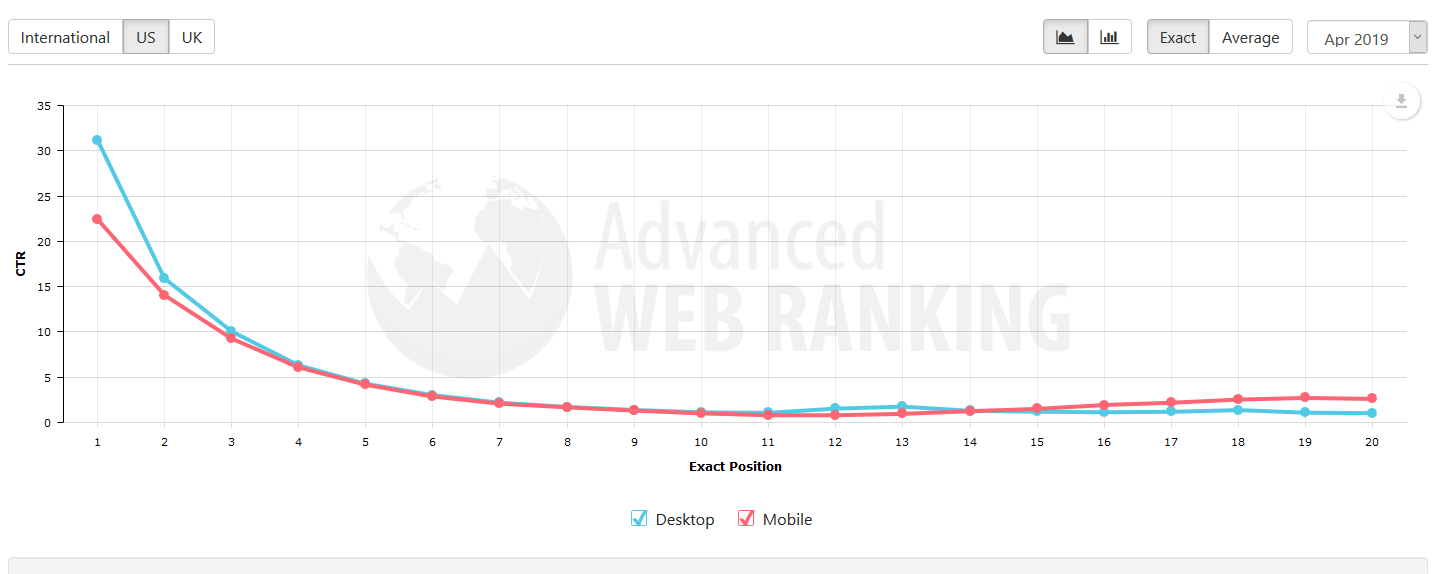Where do you hide a body so one will find it? On page 2 of Google.
That’s how this classic joke from the SEO community went.
Except that it’s now more like ‘bottom of page 1’ NOT page 2.
If you’ve been spending your waking hours building links and churning out content day in day out but simply not seeing getting a positive ROI, it might be time to rethink your strategy.
Here are the 3 things that have been delivering the most impact for all my SEO projects and is likely to help you too.
Spoiler alert: Link building isn’t one of them.
Let’s begin.
1- Focusing On User Engagement
If you are overly excited that your website is getting a lot of registrations and your business is ready to leap onto the next level, then you might be highly mistaken. It’s no secret that most customers who sign up for a product will use it only once.
Have a look at the below graph that displays that the maximum number of visits are made by users who visit the site just once.
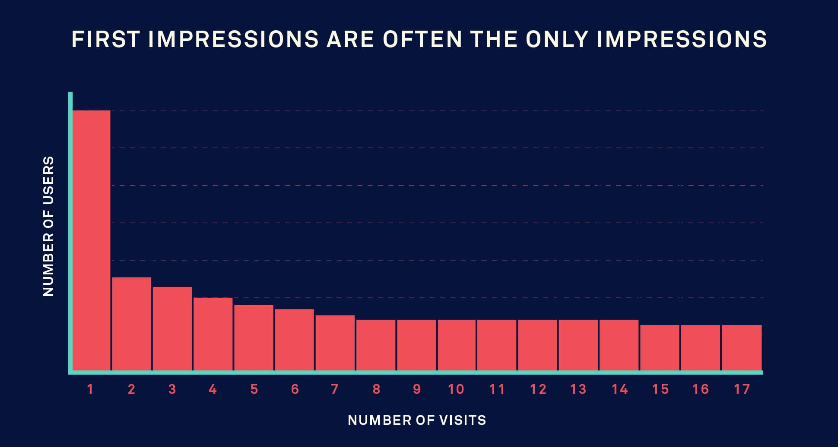
This means, number of sign ups is a false metric to measure ROI. The real metric is conversions. The more engaged the user, the higher are the chances of conversion. Here are the top ways to boost engagement on your website:
A – Increase Dwell Time
Ahrefs defines dwell time as “The time between when a user clicks on our search result and when they come back from your website tells a potential story.”
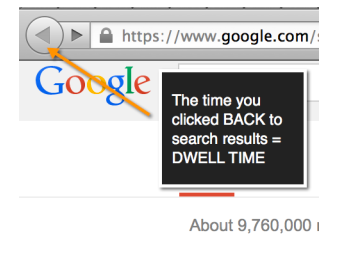
For example, if I search on Google “importance of Yoga” and spend around 10 minutes of my time reading the content after clicking the first website returned in the searched results, that webpage’s dwell time would be 10 minutes. Now, assume several people doing that and spending 5,7,8,9 minutes on that page reading the content. The average dwell time for that page would be around 7 minutes (assuming).
Dwell time is a great measure of user engagement because it tells the search engines how engaged the users remain once they visit your website from the SERP.
Dwell time is directly related to conversions because a higher dwell time certainly means the user is interested in your product or services and they thoroughly read/engage themselves in your webpage before they return back.
B- Improve Page Speed
Google recently started using page speed as one of the ranking factors and this update is called the ‘Speed Update’. This is what Google’s Zhiheng Wang and Doantam Phan says about this update:
The “Speed Update,” as we’re calling it, will only affect pages that deliver the slowest experience to users and will only affect a small percentage of queries. It applies the same standard to all pages, regardless of the technology used to build the page. The intent of the search query is still a very strong signal, so a slow page may still rank highly if it has great, relevant content.
Hence, page speed has a direct impact on the position of your website in the search results as well as on the user engagement. The SEO ROI is highly dependant on the page speed. Here are some ways through which you can improve the speed of your webpage:
- Use data compression program such as Gzip to reduce the sizes of files like CSS, HTML and JavaScript.
- Reduce the number of redirects happening on your site as a lot of redirects increases the number of HTTP requests and slows down your webpage.
- Use image optimizer to compress your image files.
- Use browser caching as it drastically helps to improve page loading time by eliminating the need to request resources already present in the browser cache.
- Take the help of CDN to allow prompt access to your site as your files get stored at several locations closest to your users and the loading time is reduced.
- Keep the server response time below 200ms. You can switch to a better hosting provider if needed.
C- Focus on The Micro-Moments
Produce content that focuses on micro-moments because relevant content offers a higher engagement rate when compared to irrelevant content. The four major micro-moment types are:
- I want-to-know-moments – When the searcher wants to know about something. An example query can be “what are some healthy breakfast choices?”.
- I-want-to-go-moments – When the searcher is looking for a local business or considering buying from a nearby store. An example query can be “Dominos near me”.
- I-want-to-do-moments – When the searcher is looking to accomplish a particular task. An example query can be “how to prepare a chocolate cake”.
- I-want-to-buy-moments – When the searcher is looking to buy something. An example query can be “best places to buy fresh vegetables”.
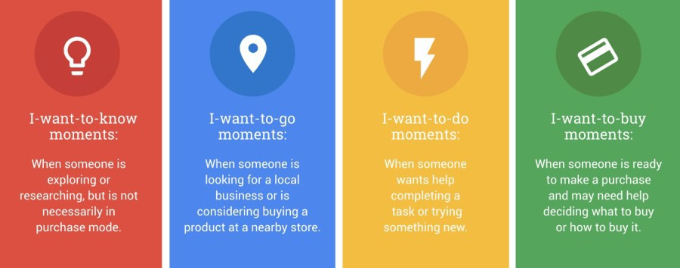
If you cater to the needs of the audiences during their exact micro-moment then you can push the customer deeper into the purchase funnel and increase the chances of conversion.
For example a business selling mobile phones can create content tutorials explaining the audiences about the features of specific handsets during the I-want-to-know moments. Similarly, they can suggest a list of stores where the phone can be bought during the I-want-to-go-moments.
During the I-want-to-do-moments, when the customers are looking to complete a specific task using their mobile phones, they can assist them in completing that specific task by creating separate pieces of content. Last but not the least, when the customer is fully convinced to buy a new phone then they can optimize product pages that is able to help the customer decide and make the purchase.
D- Take The Help of Chatbots
Chatbots are slowly replacing the customer support executives. They act as friend of the customers and assist them in making purchases online.
Chatbots can prove to be a game-changer in user engagement and definitely helps to increase conversions. They are powered by machine learning algorithms meaning they can learn from the past conversations they had with the customers and remember them accurately.
The customers find it extremely easier to communicate with a chatbot because they can accurately remember who they are and what problems they faced in the past. A prompt response from the chabot and easy assistance keeps the customer happy.
Customer experience is the single most important distinguisher that can prove to be a game changer for your business.
E- Improve Internal Linking Structure
Most webmasters ignore the optimization of internal links and focus more in the acquisition of external links. They forget that internal linking is an integral part of the overall SEO strategy and it helps to boost boost SEO and user experience. Here are some ways through which you can improve the internal linking of your website:
- Create a blog and regularly add content in it. Link relevantly to your inner pages from every single page of your content. Wikipedia is a great example to follow in terms of internal links. You can copy Wikipedia in this regard and link to your inner pages in the same manner as Wikipedia does. Creating lots of content is a great way to create lots of internal links to your site.
- Always use dofollow attribute when linking to inner pages and always use nofollow attribute when linking to your social media profiles.
- Use an anchor text that helps the user in website navigation. Do not stuff keywords in your anchor as it does not look good and contributes to a poor user experience. Always remember that Google values user experience more than anything else.
- Make sure every inner page on your site can be reached via 2-3 clicks max. You can use a tool like SEO Powersuite to check the click depth of your inner pages.
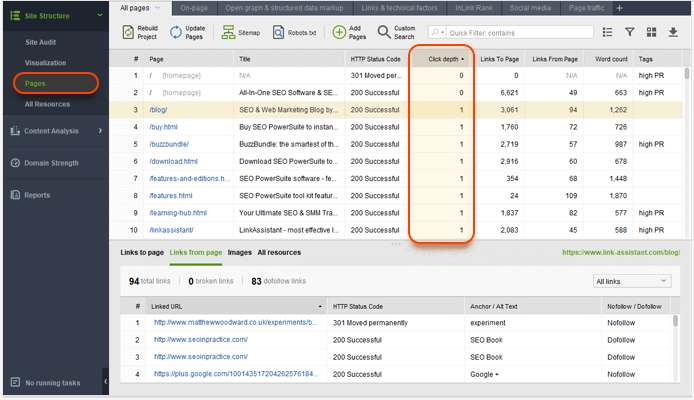
- Make sure all your important pages are linked. It is best to link to the important inner pages from the home page because the home page has the maximum value. A good internal linking structure is provided below:

- Do not leave image links with empty alt text and provide proper names to them.
- Link your high converting pages from your high traffic pages because this will be a great opportunity to raise the ROI of your SEO strategy with minimal effort.
F- Strive For Content Quality, Not Quantity
When it comes to creating content, publish only those content pieces that are really helpful for the user and strive to keep your domain reputation high. Always strive for quality of the content and do not run after quantity.
We are living in the era of “Content Shock” meaning businesses are producing more content than people can read. This excess content supply is far exceeding the content demand. This certainly means producing more content would be of no use if it exceeds the content demand.
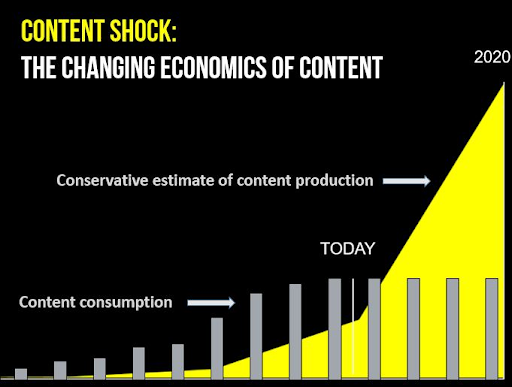
When I say do not run after quantity it does not means that you should publish just 1 blog post each month. Publish a limited number of blog posts each month but every single one of it must be full of quality content. If you can maintain the quality of your content for each post then you can publish many of them each month.
A survey by Hubspot revealed that businesses that published more than 11 blog posts a month were also able to increase traffic and leads. Please refer to the below chart.
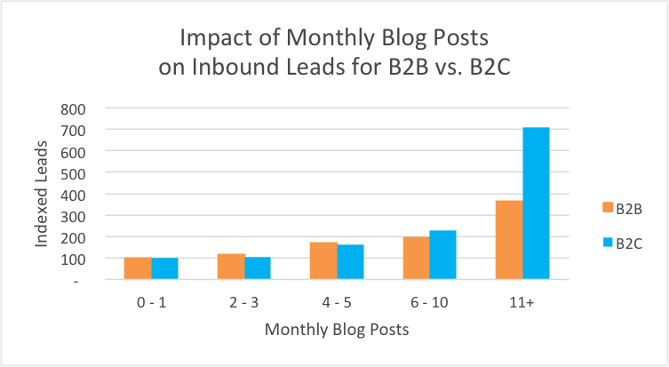
G- Improve Your Writing Style
You must always focus on the intent of your target audience when you are preparing your content. Besides, you must use a language that imitates the language of the user as this will result in higher conversions. Here are some easy ways to improve your writing style:
- Use a straightforward language that even a class 5th grade student can easily understand. Use the Flesch Kincaid writing score to calculate the readability score of your content. A score between 70-75 is considered good to be read and understood by all.
- Limit the use of long sentences and use shorter sentences. People do not want to read longer paragraphs. Shorter sentences can be read and understood easily leading to higher engagement.
- Use an active voice and favor verbs instead of nouns.
- Do not make your content a cocktail of too many advices. Focus on solving a single problem at a time.
- Use proper bullet points, subheadings, bold and italics as and where required. This will drastically help to improve the readability of your content.
- Add images and videos because content with images often leads to a higher engagement. Use directive clues in your images that points to your CTA. People are programmed in such a manner that they will definitely follow the directional clues in the image. If you don’t believe me then have a look at the below image and test yourself.

H- Reduce Bounce Rate
Bounce rate are extremely annoying as it have a negative impact on the number of conversions.
Bounce rate happens when the user visits your site but leaves it without going to the second page.
A bounce rate of 30-50% is termed as excellent. Here are some proven ways to reduce the bounce rate of your website:
- Avoid the use of popups as this can distract the users and force them to leave your website.
- Prepare content that targets the user intent. If your content is able to help the users then they will stay on your website else they will leave it. It’s simple as that!
- Improve the trustworthiness of your site by displaying badges. This will convince the customer that the site they are visiting is genuine and persuade them to take the next action.
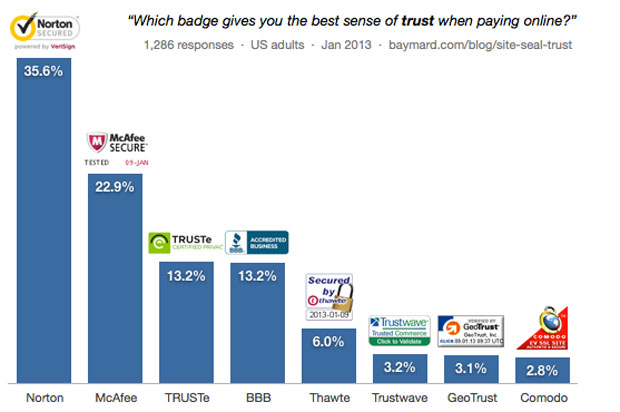
- Use proper internal links as they are extremely effective in keeping the bounce rate down.
- Always update your older blog pages to keep them new and fresh as stale content can make the user visit another site.
- Use chatbots who can act as a friend of the customer and suggest them stuffs pointing to other relevant inner pages on your site. This can again reduce the bounce rate of your site.
- Use the power of storytelling to convince the users to take an action.
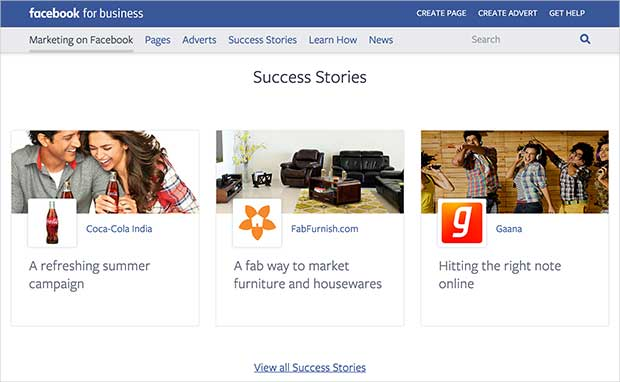
2- Targeting Long Tail Keywords
With the rise in voice search, long tail keywords have grown in importance than before. Long tail keywords are longer and more specific keywords that specifically states the requirements of the searcher. An example of a long tail keyword is “where to buy an iphone near me?”. In this query, the searcher is explicitly asking for store recommendations where he/she can buy an iphone.
Long tail keywords are able to identify the real intent of the user and are therefore able to increase the number of conversions. Moreover, the Cost Per Click for long tail keywords are lower because of lower competition meaning it is easier for you to rank on these keywords as compared to short tail keywords.

Higher rankings often leads to higher conversions and better SEO ROI.
How to Find Long Tail Keywords?
In order to find the most relevant long tail keywords related to your business, you need to use certain tools that are listed below:
This keyword tool lets you find the top long tail keywords related to your main money keyword. Simply enter your main keyword in the search bar and choose your industry and target country as shown in the below screenshot. The tool will return the best long tail keyword ideas for you.
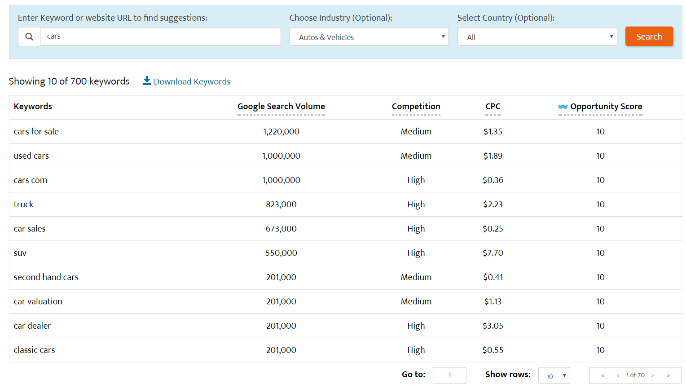
Another useful tool to find long tail keywords is keywordtool.io. This tool compiles all the autocomplete search suggestions returned by Google for your target query and presents it in a list of over 750 search phrases.
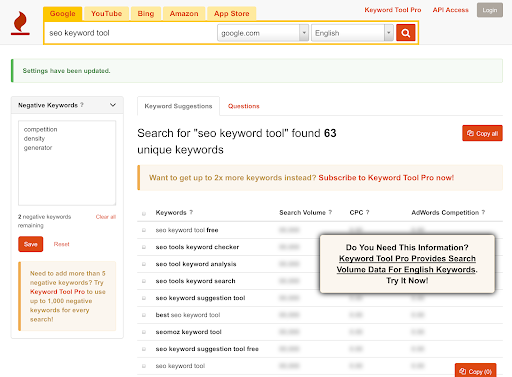
C- Ubersuggest
Ubersuggest is another awesome tool to find long tail keywords. Simply enter your target keyword in the search bar and this tool will return hundreds of relevant long tail keyword suggestions in seconds. The best part of the tool is that you can have an actual estimate of the amount of traffic the keywords can send to your website. You can easily export your results as a CSV file for further data compilation.
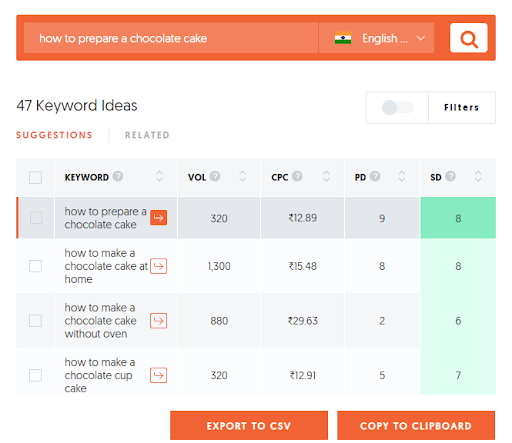
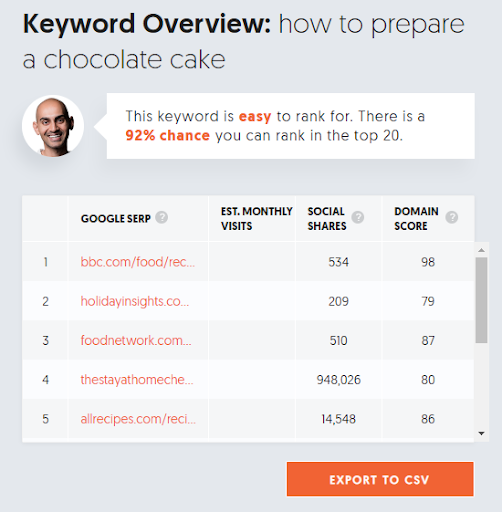
Prepare A List of Question Keywords For Voice Search
We already know that people like to ask questions to Google when they are searching with their voice. Hence, it is important to include all the relevant voice search queries before you prepare your final keyword list. Make use of Google autosuggest and use the below question modifiers in your search:
- How
- Why
- Where
- When
- Do
- Should
- Which
- Does
- Have
- Is
- Who
- Can
- Shall
- Are
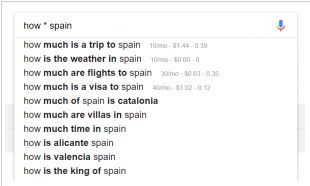
You can also make use of sites like Quora and Reddit to find questions related to your targeted niche. If you target long tail keywords where the user has specified their search intent, you will be double your chances of conversion from SEO.
3- Optimizing For Google Local
If you are promoting a business that has lots of local customers then you certainly need to improve your business presence on Google local. Business having a complete and accurate GMB listing receive around 7x more clicks and attract 70% local visits.
A – Register Your Business On Google My business (GMB)
Here are the steps that you need to follow to register your business for Google local:
- Step 1: Register your business on Google My Business (GMB). To do this, visit Google My Business and click “start now”.
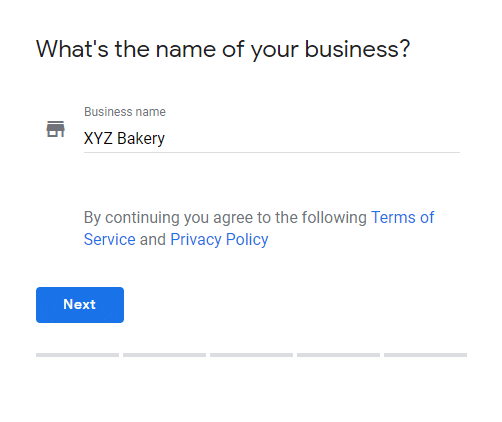
- Step 2: Enter complete information about your business like your business name (not keywords), your business location, service areas, hours of operation, category that best fits your business and the contact details.
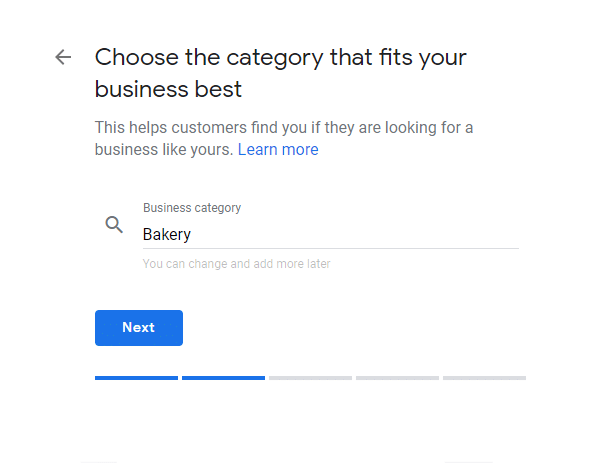
That’s it. Google will send a postcard to your business in order to verify the information and once it’s approved, your business will start showing in the Google local search results.
B- Optimize Your Business on Google My Business (GMB)
- You only get 750 characters to describe your business so use this space intelligently. Do not repeat what has been specified in the business name or category. Instead share some words about your business USP and why a customer should choose your business. Focus on solving the most pressing problem of the customer.
- Publish posts in your Google My Business listing as they are like ads that display up in the Knowledge Panel. You can add details of any latest events that your business attended or sponsored. The idea behind the post should be to engage the user. Do not try to promote your products in this space because it won’t help and might look spammy.
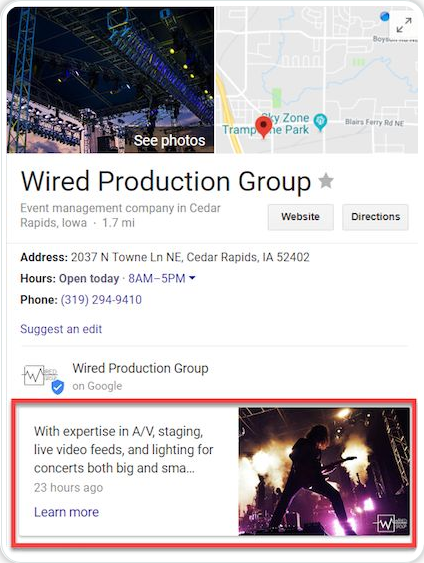
- You can even try adding emojis to your post as this would both be fun and engaging.
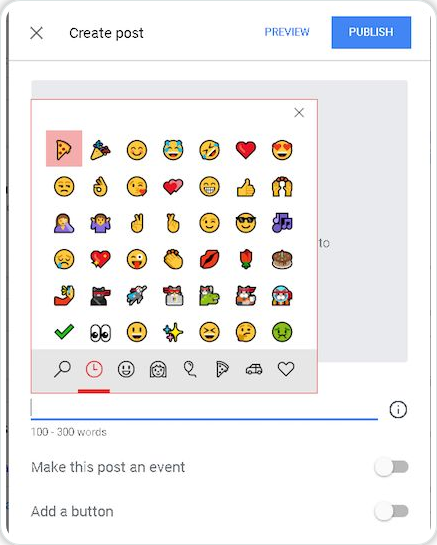
- Add high resolution images that makes your business stand out in the search results. You can even create a 360 view virtual tour of your business and add them in your listing.
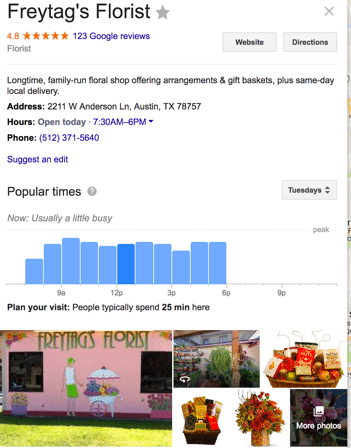
- Encourage customers to leave reviews for your business because reviews leave an everlasting impression in the minds of your prospects that directly impacts ROI. You should take the help of email marketing, SMS marketing and even offline marketing to gather reviews for your business. As per a Brightlocal survey, around 85% of customers trust consumer reviews as much as personal recommendations. People definitely read reviews before making a purchase decision hence you must respond to every customer review. If you don’t respond to customer reviews then people might think you as a scammer.
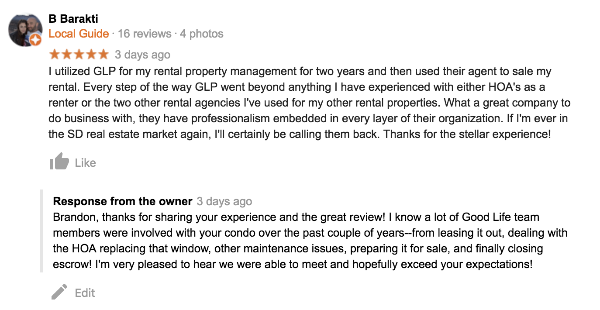
C- Don’t Forget Voice Search
As per Comscore, half of all online searches will be voice searches by 2020 and 20% of those searches will have the following trigger words:
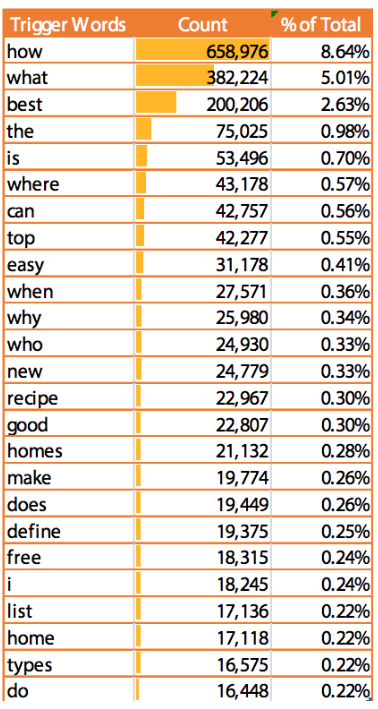
For a local business owner, optimizing your GMB listing for voice search queries starting with what, where, best, top etc are extremely crucial because ranking locally for these queries can get their business recommended by voice search assistants like Apple Siri, Amazon Echo or Google Home.
It would be best if you prepare a list of voice search keywords that people might ask when finding your business online. You can make use of tools like Ubersuggest and Answer The Public to find the best long tail keywords. Try including the searched words in the description of your GMB listing and acquire links to your GMB profile using the targeted keywords in the anchor text. Also, encourage customers to leave reviews on your GMB listing and use words like best service or top service to allow Google to capture that data in their local search ranking algorithm. Taking these smaller yet important steps can go a long way in optimizing your local business for voice search queries.
Final Thoughts
Generating ROI from your SEO strategy is not an easy task but taking appropriate steps to improve user experience and engagement can certainly help to pump up your ROI.
Follow the strategies discussed in this article and always focus on solving the problem of the user. Remember SEO takes patience so don’t expect to see the results overnight. Sow the seeds of better UX, get the basics right and focus on the future.
Don’t let your website become the body that is never found.
Looking for a digital marketing agency in London ? Or a professional landing page design agency? From SEO services to AdWords, Facebook to LinkedIn and even Google Ads training, we’ve got you covered. Flow20 now also offers Facebook ad training courses and Instagram ads courses.


